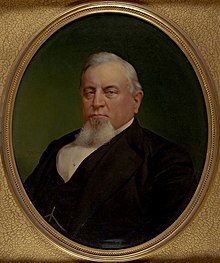
The Central Pacific Railroad (CPRR) was a rail company chartered by U.S. Congress in 1862 to build a railroad eastwards from Sacramento, California, to complete the western part of the "First transcontinental railroad" in North America. Incorporated in 1861, CPRR ceased operation in 1959 when assets were formally merged into the Southern Pacific Railroad.

Theodore Dehone Judah was an American civil engineer who was a central figure in the original promotion, establishment, and design of the First transcontinental railroad. He found investors for what became the Central Pacific Railroad (CPRR). As chief engineer, he performed much of the route survey work to determine the best alignment for the railroad over the Sierra Nevada, which was completed six years after his death.

Amasa Leland Stanford was an American attorney, industrialist, philanthropist, and Republican Party politician from California. He served as the 8th Governor of California from 1862 to 1863 and represented the state in the United States Senate from 1885 until his death in 1893. He and his wife Jane founded Stanford University, named after their late son.

Collis Potter Huntington was an American industrialist and railway magnate. He was one of the Big Four of western railroading who invested in Theodore Judah's idea to build the Central Pacific Railroad as part of the first U.S. transcontinental railroad. Huntington helped lead and develop other major interstate lines, such as the Southern Pacific Railroad and the Chesapeake & Ohio Railway (C&O), which he was recruited to help complete. The C&O, completed in 1873, fulfilled a long-held dream of Virginians of a rail link from the James River at Richmond to the Ohio River Valley. The new railroad facilities adjacent to the river there resulted in expansion of the former small town of Guyandotte, West Virginia into part of a new city which was named Huntington in his honor.

"The Big Four" was the name popularly given to the famous and influential businessmen, philanthropists and railroad tycoons who funded the Central Pacific Railroad (C.P.R.R.), which formed the western portion through the Sierra Nevada and the Rocky Mountains of the First Transcontinental Railroad in the United States, built from the mid-continent at the Missouri River to the Pacific Ocean during the middle and late 1860s. Composed of Leland Stanford (1824–1893), Collis Potter Huntington (1821–1900), Mark Hopkins Jr. (1813–1878), and Charles Crocker (1822–1888), the four themselves, however, personally preferred to be known as "The Associates." They enriched themselves utilizing tax money and land grants, while heavily influencing the state legislature from within the Republican Party, and through monopolizing tactics. Contemporary critics claimed they were the greatest swindlers in U.S. history.
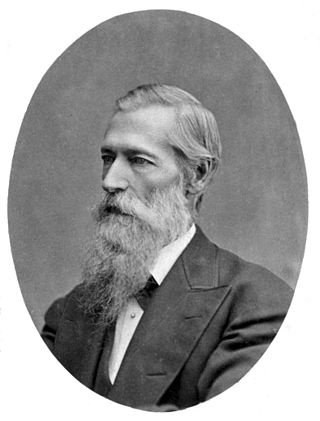
Mark Hopkins Jr. was an American railroad executive. He was one of four principal investors that funded Theodore D. Judah's idea of building a railway over the Sierra Nevada from Sacramento, California to Promontory, Utah. They formed the Central Pacific Railroad along with Leland Stanford, Charles Crocker, and Collis Huntington in 1861.
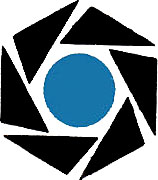
Crocker National Bank was a United States bank headquartered in San Francisco, California. It was acquired by and merged into Wells Fargo Bank in 1986.

William Henry Crocker I was an American banker, the president of Crocker National Bank and a prominent member of the Republican Party.

Isaias Wolf Hellman was a Kingdom of Bavaria-born American banker and philanthropist, and a founding father of the University of Southern California.

John Joseph Valentine Sr. was an American expressman. He was the first president of Wells Fargo & Company who had not been a banker and served from 1892 until his death in 1901.
Danford Newton Barney was an American expressman who served as president of Wells Fargo & Company from 1853 to 1866.

Lloyd Tevis was a banker and capitalist who served as president of Wells Fargo & Company from 1872 to 1892.
The Western Pacific Railroad (1862–1870) was formed in 1862 to build a railroad from Sacramento, California, to the San Francisco Bay, the westernmost portion of the First transcontinental railroad. After the completion of the railroad from Sacramento to Alameda Terminal on September 6, 1869, and then the Oakland Pier on November 8, 1869, which was the Pacific coast terminus of the transcontinental railroad, the Western Pacific Railroad was absorbed in 1870 into the Central Pacific Railroad.

Charles Frederick Crocker was vice president of the Southern Pacific Railroad Company.
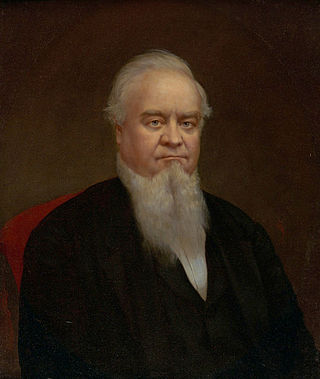
Edwin Bryant Crocker was a California Supreme Court Justice and founder of the Crocker Art Museum in Sacramento, California.
Walter Danforth Bliss (1874-1956) was an American architect from California. Many of his buildings are listed on the National Register of Historic Places.
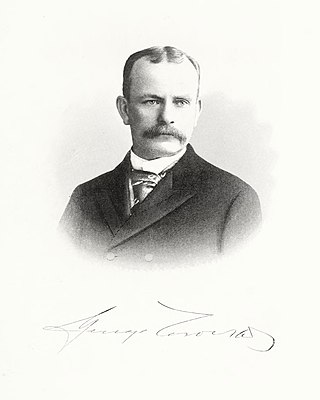
George Crocker was an American businessman. A member of Tuller & Co., he was also a director of several corporations, including Trust Company of America. He was second vice president of the Southern Pacific Railroad. In 1909, Crocker was valued between $10 million to $20 million. The 75-room, three-story Crocker Mansion was built in 1907 for Crocker in Mahwah, New Jersey, and is one of New Jersey's historical landmarks.
Edwin Sheldon Whitehouse was an American diplomat who served as the U.S. Minister to Guatemala and U.S. Minister to Colombia.
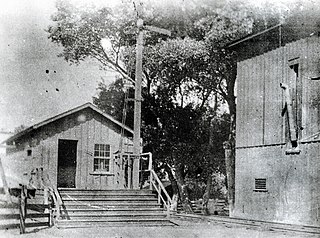
Lang Southern Pacific Station is a former Southern Pacific railway station located in Soledad Canyon near the eastern end of Santa Clarita, California. On September 5, 1876, the first railway to Los Angeles was completed at this site. The Lang Southern Pacific Station was designated a California Historic Landmark on May 22, 1957.
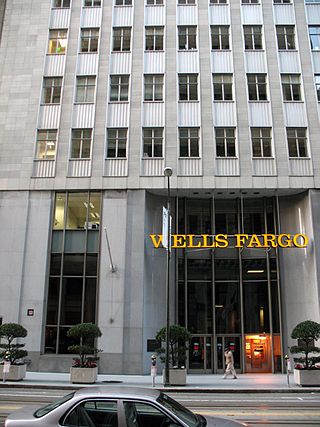
Wells Fargo was an American banking company based in San Francisco, California, that was acquired by Norwest Corporation in 1998. During the California Gold Rush in early 1848 at Sutter's Mill near Coloma, California, financiers and entrepreneurs from all over North America and the world flocked to California, drawn by the promise of huge profits. Vermont native Henry Wells and New Yorker William G. Fargo watched the California economy boom with keen interest. Before either Wells or Fargo could pursue opportunities offered in the Western United States, however, they had business to attend to in the Eastern United States.
